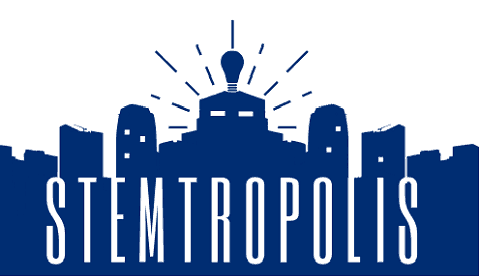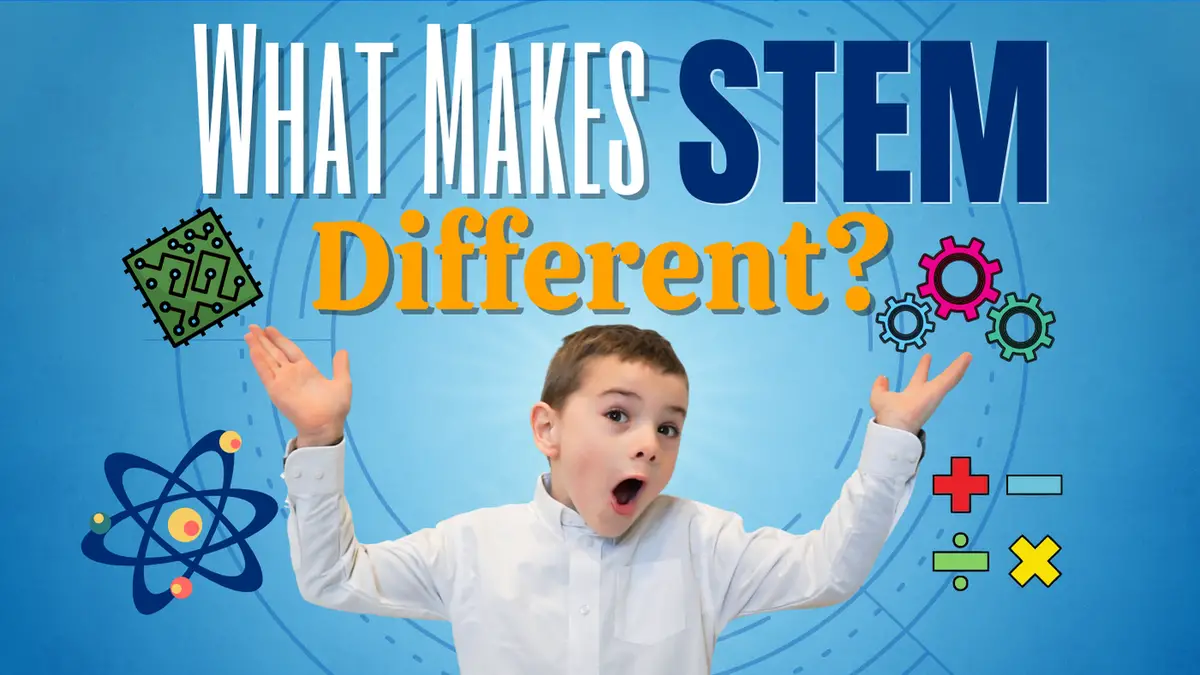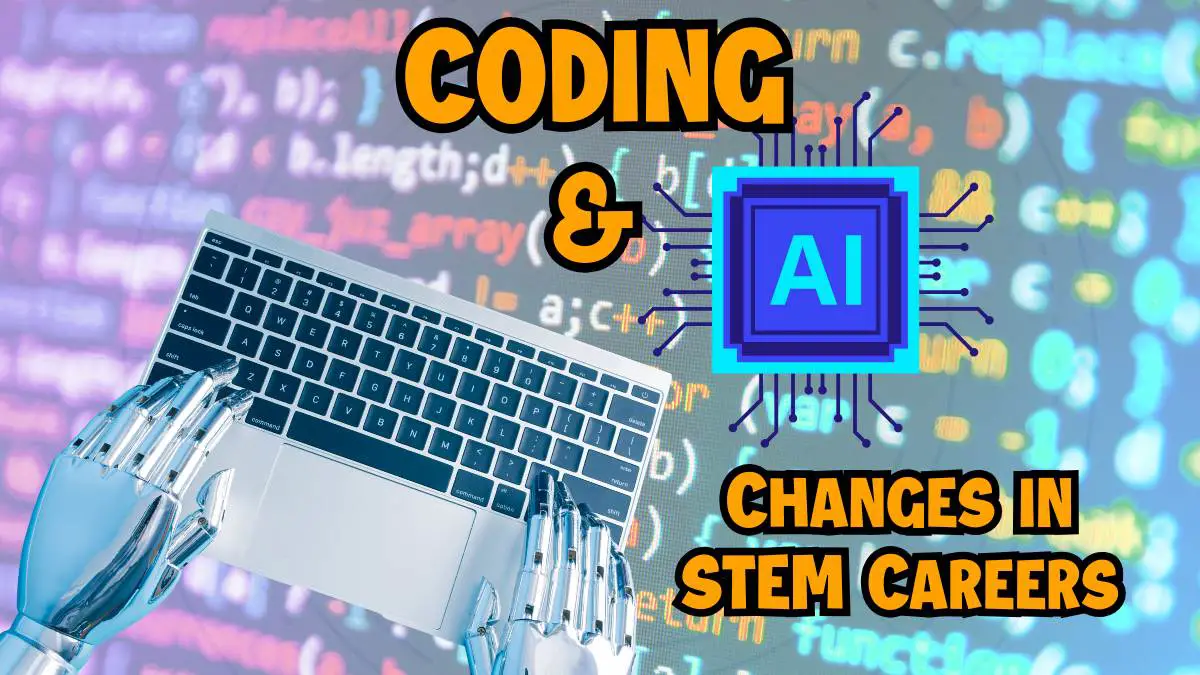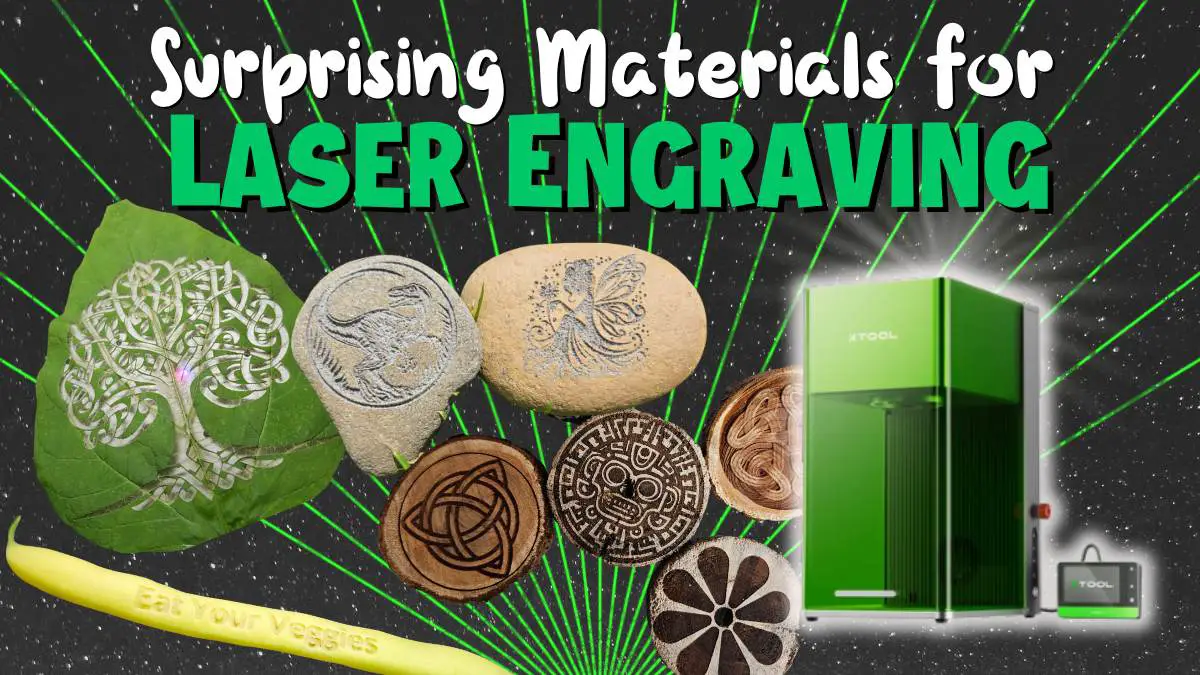STEM learning differs from the more traditional educational approach. It is not just about teaching the subjects Science, Technology, Engineering Mathematics but also how they are taught that matters in STEM learning. In traditional educational systems, emphasis is placed on acquiring facts and how well they can be recalled in an exam setting.
STEM learning is different because it emphasizes innovation and creation over replication. It uses hands-on teaching methods that encourage the retention and practical application of knowledge through learning by doing. STEM is student-centered, not teacher-centered, and promotes critical thinking.
Previous educational systems viewed learning as being about how well a student can regurgitate the material at test time and depended heavily on rote memorization. However, just because you can remember a formula or a fact does not mean you know how to use it. What good is all this knowledge packed into your head if you have no use for it (well, other than being great at trivia or Jeopardy)?
Let’s explore how STEM programs blend these core areas together for a more integrated learning experience.
- STEM Learning Is Hands-On
- STEM Education Emphasizes Learning By Doing
- STEM Learning Emphasizes Innovation and Creation Over Replication
- STEM Learning Promotes Inter-Disciplinary Thinking
- STEM Learning Is Student-Centered, Not Teacher-Centered
STEM Teaching Is Different From Traditional Education
Traditional Education is broken. It has been for some time. It’s a product of the Industrial Age, designed to educate the masses and create a competent and obedient workforce. It served its purpose, though we’ve moved on to an age of information. STEM (and STEAM) aim to provide an education system for today, and are still evolving.
Classes and lecture theatres the world over are still filled with students assiduously taking notes as a teacher stands in front of the room imparting information verbally and occasionally writing down important points or formulae on a blackboard. This kind of education produces people that have learned to parrot what they have been taught without necessarily understanding what it means and why. Bright young minds through the centuries have become bored and rebellious and may have dropped entirely out of the education system because of this.
Albert Einstein was expelled from school because he didn’t think there was any point in learning facts. He told his history teacher that he didn’t believe that learning facts was education. Naturally, his views were not well received, and his teachers thought him disrespectful because he asked them questions they couldn’t answer.
When his history teacher asked him what he did think was education, Einstein said that it wasn’t facts that mattered but ideas. His teachers thought he was stupid, and Einstein hated school. The only class he had any time for was mathematics. Eventually, the headteacher called him in and asked him to leave because of his constant rebellion and refusal to learn.
Einstein would probably have appreciated STEM learning much more, but he was born when traditional education methods were deeply entrenched in Germany. In the US, the object of education was to turn out obedient office or factory workers that large corporates and industries could employ. This model still forms the core of traditional education today. People like Einstein just don’t do well in boxes, yet their contribution to the advancement of humanity can be staggering.
The days when the teacher was regarded as the font of all wisdom are fading, and in STEM education, the emphasis is on learning rather than teaching. The teacher plays more of a facilitative role in the learning experience by offering guidance on how to go about things and information in response to questions. STEM lessons are not restricted to stuffy classrooms and lecture halls.
They can take place outdoors, in laboratories, on tours of science museums, in discussions amongst groups of students, in craft projects at home, in visits to workplaces, geological sites, archaeological digs, and in play activities. STEM students are encouraged to learn how things work; they are not necessarily told how things work.
Related Posts: We have a whole series of STEM Activities if you want to check them out at home or in the classroom.
STEM Learning Is Hands-On
Using the STEM approach to education, students are taught not just the “what” of a subject but also “how” and “why”. In STEM classes of all levels, students engage in projects designed to test their creative thinking and put what they have learned into practice. For instance, they will learn how a plant grows from seed by actually planting a seed in a transparent container and watching as it sends out roots and shoots, as opposed to just reading a chapter in a textbook.
Instead of just listening to the teacher trying to stuff their minds full of facts while sitting passively at their desks, they get involved with the subject matter themselves. Instead of just memorizing formulae for math, they get to see how the concepts are applied in real life and can better appreciate the value of the knowledge they’ve just acquired.
They learn about the principles of bridge-building and are then challenged to build their own model of a bridge for homework. They learn about coding by writing computer programs for themselves. They are encouraged to use their observational powers to see how one chemical reacts with another to understand acids and bases.
STEM learning emphasizes a practical route to knowledge acquisition instead of rote memorization and stimulates curiosity about the subject. Learners are encouraged to ask questions like, “why did this happen, and “what happens if I do this rather than that?” Sometimes, instead of just teaching the method as traditional education does, STEM students must come up with a plan to solve a problem themselves.
STEM Education Emphasizes Learning By Doing
Being hands on implies doing and experiencing, rather than learning solely from lectures or reading.
STEM students learn by doing projects and experiments and playing educational games. They get to see the results for themselves. In experiential learning, people engage multiple senses to acquire information. Children use their senses of touch, hearing, sight, and smell to obtain information in STEM learning settings. For instance, they can explore the difference between a solid, a liquid, and a gas by using their senses.
They learn the principles of mechanics, gravity, levers, and space by building or assembling working models that demonstrate them. These activities are fun, exciting, and mentally stimulating while at the same time developing hand-eye coordination and fine motor control. Importantly, they learn that a mistake is not a failure and that it may take multiple attempts to achieve a goal.
Related Post: Is it Okay to Fail?
STEM education is as much about applying knowledge as it is about acquiring knowledge, whereas traditional education mainly emphasizes knowledge acquisition. Many adults who were subjected to conventional education complain to this day that they never learned much at school and hated it. Sadly, many of them could not realize their full potential because of it.
In an ever-changing technological world where facts are changing faster than humans can process them and today’s big breakthrough is obsolete tomorrow, adaptability is crucial for survival.
Even STEM skills are not immune to obsolesce as technology changes and new jobs (and skills) are needed. STEM literacy, the mindset, and experience, prepare students for adapting to change and solving their own “real world problems.” STEM learning fosters a lifelong openness to continuing education that more traditional educational methods do not. What works today may be outdated tomorrow or no longer applicable.
Read more about experiential learning and why it’s important in our post about STEM in Early Education.
STEM Learning Emphasizes Innovation and Creation Over Replication
Traditionally, education has required students to replicate information from what they have learned from books or seen in the classroom. There are strict rules to follow with this kind of learning, and a student is actively discouraged from “coloring outside the lines” so to speak. There is a “right way” and a “wrong” way to do things, and only doing them the “right” way is rewarded, which stifles creativity.
By contrast, STEM learning accepts that there can be multiple ways to solve a problem, and there may be no single correct method. This encourages creativity in finding solutions because students must think for themselves in STEM classes rather than having it all done for them. STEM learning promotes critical thinking and analysis in a way that traditional educational methods do not.
STEM learning also promotes confidence because the students are treated as capable of exercising their own minds to develop solutions. Free thinking is not only encouraged, it is expected. The classes are interactive as students are encouraged to discuss among themselves how to go about a particular project or experiment. Some have said that traditional education teaches how to think inside the box while STEM learning promotes thinking outside the box.
In fact, STEM learning in many instances does not provide the box at all. The students don’t even know there is a box because they aren’t taught that one exists. They learn by doing and seeing for themselves what works and what doesn’t.
This approach creates opportunities for students to learn and develop with fewer restrictions imposed upon them, while maintaining a high level of expectation.
STEM recognizes that not all students’ minds operate the same way, and that is a good thing rather than something to be discouraged. It builds confidence in students, and they are praised for their thinking skills, not their ability to memorize vast quantities of outdated facts. The internet allows anyone to have access to just about any fact at any time. Remembering facts and data become less critical, and how to analyze, combine, and use data become more important skills.
This does not mean that they know what to do with that information, how it came to be, why it is important, or even whether it is important. In the era of “fake news”, it has been observed that STEM students are more likely to be discriminating about the information they accept as truth and more likely to think critically about what they are hearing. This can protect them in life from scams, fraudsters, and misinformation.
STEM Learning Promotes Inter-Disciplinary Thinking
In traditional education, subjects are taught in silos, so there is no cross-pollination of ideas between different disciplines. Science and Math subjects are well represented, though not so much engineering and technology. Along with that, traditional methods treat these subjects as separate classes with separate curriculum.
There is a distinct difference between STEM subjects (e.g. math, science) and STEM education. Keep this in mind when evaluating STEM programs; Do they teach subjects separately, or are the STEM concepts blended together into a cohesive experience?
In STEM learning, several topics can be taught in one project or experiment, and students learn to think less rigidly about various STEM disciplines. They can easily translate ideas from one subject to another and find new and unexpected applications for old concepts.
STEM learning gives students a toolkit of concepts, strategies, skills, and mental approaches that can be applied in various fields. They are encouraged to draw on all of their knowledge to solve a particular problem. Challenges in the world of science and technology can be complex and interrelated, requiring a multi-disciplinary approach.
In the real world, the principles of physics operate in fields of chemistry, biology, astronomy, and engineering, not apart from them. STEM students learn to adapt strategies and problem-solving methods as they proceed with a project or task.
Traditional education does not promote a multi-disciplinary approach, and students are usually unaware of the inter-relatedness of the different subjects they are learning. This causes intellectual silos in society that can actively hinder progress. These days an interdisciplinary approach to education is becoming more mainstream as it is increasingly recognized that it enhances critical thinking, communication, and creativity.
STEM Learning Is Student-Centered, Not Teacher-Centered
STEM subjects can be taught using various teaching methods, including traditional education. After all, math and science have been taught for decades using the old teaching methods. However, more and more STEM teachers are employing non-traditional methods that elevate the student’s role in the learning experience.
STEM teaching methods involve project-based learning, problem-based learning, and inquiry-based learning. Inquiry-based learning focuses on the student asking questions on the lesson’s subject matter. The teacher’s role is to challenge the student to reflect and process the information, leading to additional inquiry (and understanding.)
The term “Direct Instruction” is used to describe the more traditional educational methods where the teacher is the center of the universe and students are only there to listen. By contrast, “Explicit Instruction” is a structured approach whereby new skills and knowledge are presented to students, revised, and then incorporated into activities that increase the likelihood of retention.
Explicit instruction is necessary to teach content that children cannot discover on their own. An example is when teaching what sounds are represented by letters of the alphabet or what order to use in operations in algebra. In STEM education, a certain amount of Explicit Instruction is necessary because students cannot be expected to discover everything independently.
However, Explicit Instruction allows the teacher to be more flexible in catering to a students’ needs and abilities, checking for understanding while at the same time ensuring that learning goals for the lesson are met. In Explicit Instruction, the learning experience is structured to facilitate inquiries from students while still presenting them with the information they need to know by the end of the lesson.
The method that allows the learner to take the lead in a lesson by asking questions and deciding on the direction is called Inquiry-based instruction. The Inquiry-based model on its own may not always be enough, but it can be a valuable tool in STEM learning where traditional methods don’t work well.
The 5E model of instruction is an example of a successful Inquiry-based Instruction in which the learning event is ordered into:
- Engagement
- Exploration
- Explanation
- Elaboration
- Evaluation
A study in 2016 showed that an experimental student group taught using the 5E model scored higher test results than the control group and showed a higher retention rate in postponed tests.
The 5E method has an advantage over Explicit Instruction in that it assigns more responsibility to students for their learning experience and encourages them to use critical inquiry thinking. An experienced and confident teacher can use these tools in STEM education to optimize the learning experience.
Wrap Up – What Makes STEM Education different
STEM learning is different in many ways from traditional education methods and emphasizes the application of knowledge acquired in exciting and interesting new ways. STEM education programs strive for more effective approaches to encourage innovative, critical, and analytical thinking, which is are crucial to survival in a rapidly changing world. STEM learning leads students to think for themselves and teaches them that mistakes are not synonymous with failure but rather a vital part of the learning process.
Read more to find if it’s hard to get a STEM degree, or if you need a degree at all. If you’re considering entering the STEM workforce, check out our post on STEM Careers. Don’t miss our essential Guide to STEM.




